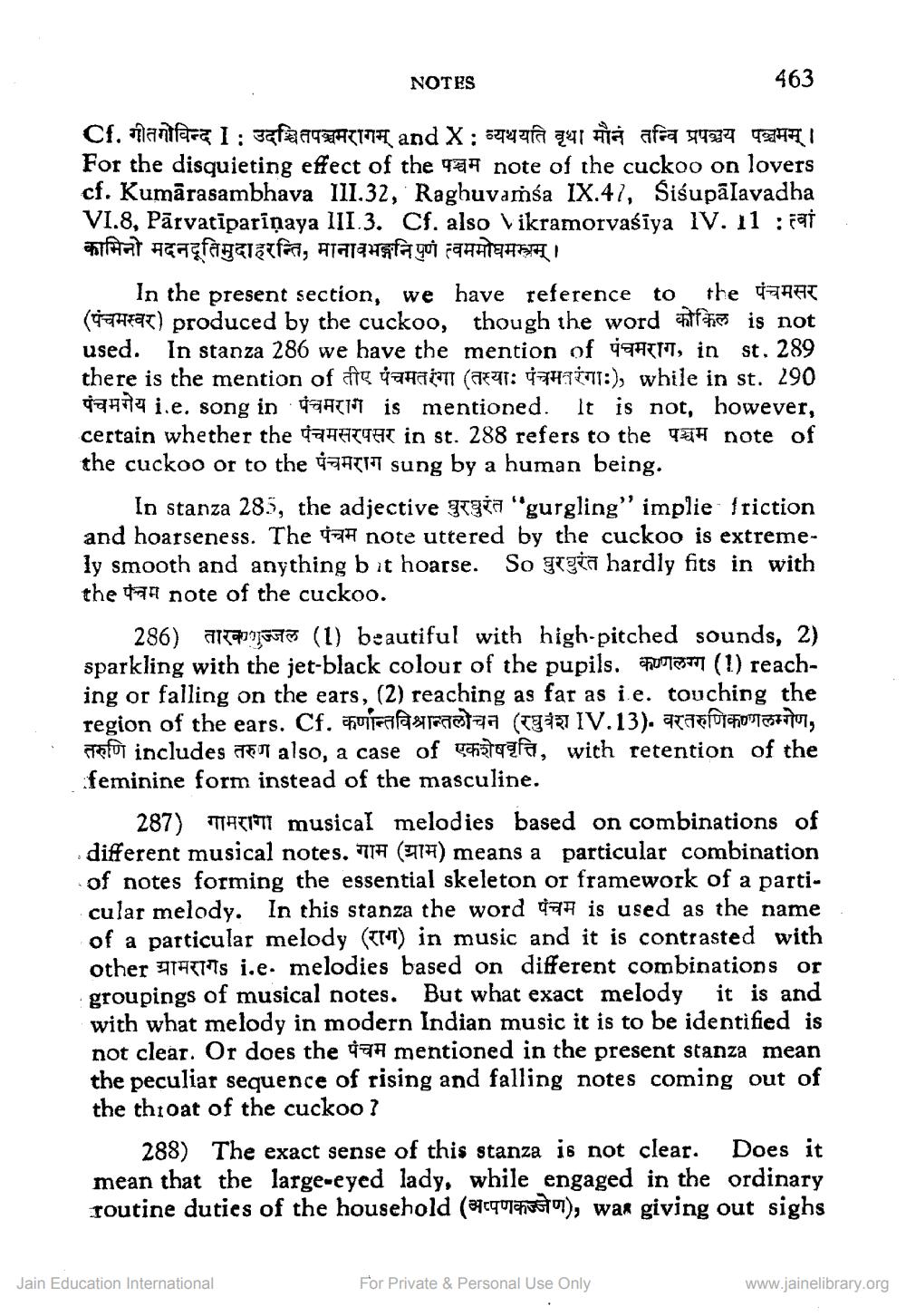________________
463
Cf. गीतगोविन्द I : उदश्चितपञ्चमरागम् and X : व्यथयति वृथा मौनं तन्वि प्रपञ्च पञ्चमम् । For the disquieting effect of the note of the cuckoo on lovers cf. Kumarasambhava III.32, Raghuvamsa IX.47, Sisupalavadha VI.8, Pārvatipariņaya III.3. Cf. also Vikramorvaśīya IV. 11 : Fa amfùnt #zaçfayzıgıfa, maqugfayı zannanen |
In the present section, we have reference to the पंचमसर (पंचमस्वर) produced by the cuckoo, though the word कोकिल is not used. In stanza 286 we have the mention of , in st. 289 there is the mention of तीए पंचमतरंगा (तस्याः पंचमतरंगा :), while in st. 290 पंचमगेय i.e. song in पंचमराग is mentioned. It is not, however, certain whether the HT in st. 288 refers to the note of the cuckoo or to the sung by a human being.
NOTES
In stanza 285, the adjective
a "gurgling" implie friction note uttered by the cuckoo is extremely smooth and anything bit hoarse. So घुरघुरंत hardly fits in with the note of the cuckoo.
and hoarseness. The
286) (1) beautiful with high-pitched sounds, 2) sparkling with the jet-black colour of the pupils. (1) reaching or falling on the ears, (2) reaching as far as ie. touching the region of the ears. Cf. कर्णान्तविश्रान्तलोचन (रघुवंश IV. 13). वरतरुणिकण्णलम्गेण, तरुणि includes तरुण also, a case of एकशेषवृत्ति, with retention of the feminine form instead of the masculine.
287) गामरागा musical melodies based on combinations of different musical notes. T (1) means a particular combination of notes forming the essential skeleton or framework of a particular melody. In this stanza the word is used as the name of a particular melody () in music and it is contrasted with others i.e. melodies based on different combinations or groupings of musical notes. But what exact melody it is and with what melody in modern Indian music it is to be identified is not clear. Or does the 4 mentioned in the present stanza mean the peculiar sequence of rising and falling notes coming out of the throat of the cuckoo ?
288) The exact sense of this stanza is not clear. Does it mean that the large-eyed lady, while engaged in the ordinary routine duties of the household (aq), was giving out sighs
Jain Education International
For Private & Personal Use Only
www.jainelibrary.org




